Swiss Chard



In The Wild Before It Is Caught By Great White Hunter Paul

Chard is, in fact, considered to be one of the healthiest vegetables available and a valuable addition to a healthy diet (like other green leafy vegetables).

Pick the bright green leaves, discard any leaves that are dull or yellow
Chard can be harvested while the leaves are young and tender, or after maturity when they are larger and have slightly tougher stems. Harvesting is a continuous process, as most species of chard produce three or more crops.
Raw chard is extremely perishable so plan to use it immediately.
Tear Off The Leaves You Want

If the stem is large like this one, tear off the green leaves and save the stem

Cut the stems into bite sized pieces

I lay them on a ledge so the processing is easier

The colored stems are from "Rainbow Chard"
Did You Know? - Fresh young chard can be used raw in salads. Mature chard leaves and stalks are typically cooked (like in pizzoccheri) or sauteed; their bitterness fades with cooking, leaving a refined flavor which is more delicate than that of cooked spinach.
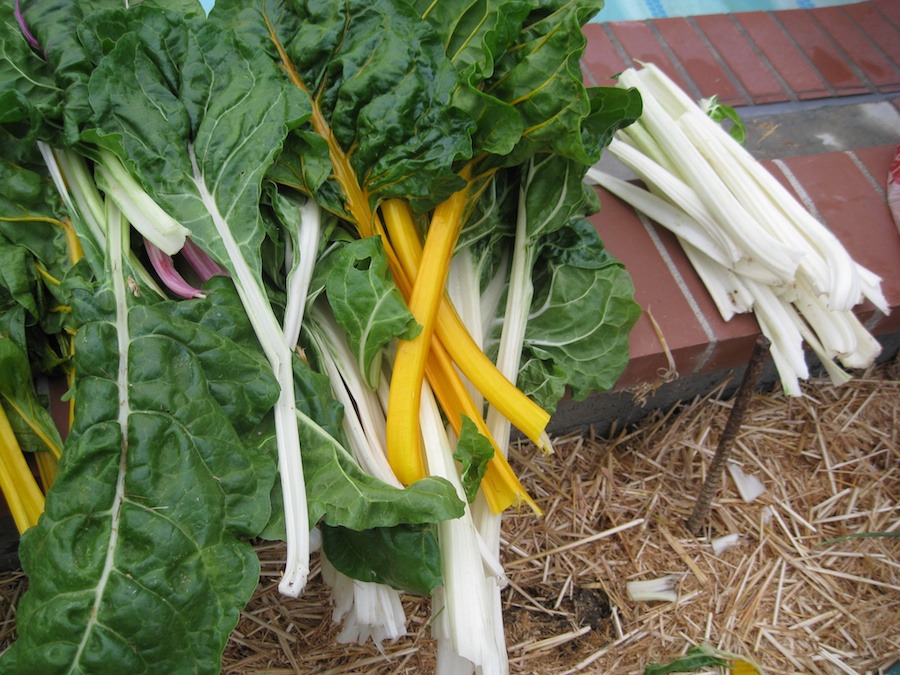
Once picked, we go through each leaf to assure no little varmints are going inside the house
Inside We Wash, Chop, And Cook

The stems are made into bite sized pieces
Did You Know? - Swiss chard is high in vitamins A, K and C, with a 175 g serving containing 214%, 716%, and 53%, respectively, of the recommended daily value.
It is also rich in minerals, dietary fiber and protein.
This food is very low in Saturated Fat and Cholesterol. It is also a good source of Thiamin, Folate, Phosphorus and Zinc, and a very good source of Dietary Fiber, Vitamin A, Vitamin C, Vitamin E (Alpha Tocopherol), Vitamin K, Riboflavin, Vitamin B6, Calcium, Iron, Magnesium, Potassium, Copper and Manganese.

Looking good

Bring a pot of water to boil... Add some salt

Rinse the leaves... Do not soak
Did You Know? - Rinse Swiss chard under cold running water. Do not soak chard as this will result in the loss of water-soluble nutrients to the water. Remove any area of the leaves that may be brown, slimy, or have holes.
Stack the leaves and slice into 1-inch slices until you reach the stems. Only the white stems of the Fordhook variety of chard are tender enough to eat. Cut stems into 1/2-inch slices discarding the bottom 1 inch portion.

Remove the stems that are to wide... chop those stems into bit sized pieces
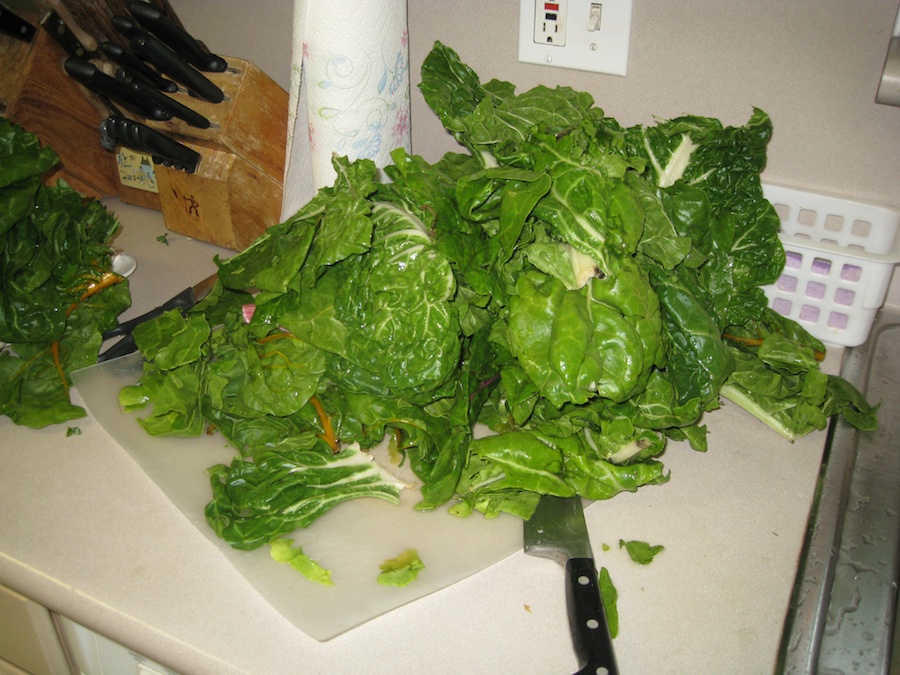
These are ready to be added to the pot of boiling water
Did You Know? - Swiss chard is not only one of the most popular vegetables along the Mediterranean but it is one of the most nutritious vegetables around and ranks second only to spinach following our analysis of the total nutrient-richness of the World's Healthiest vegetables.
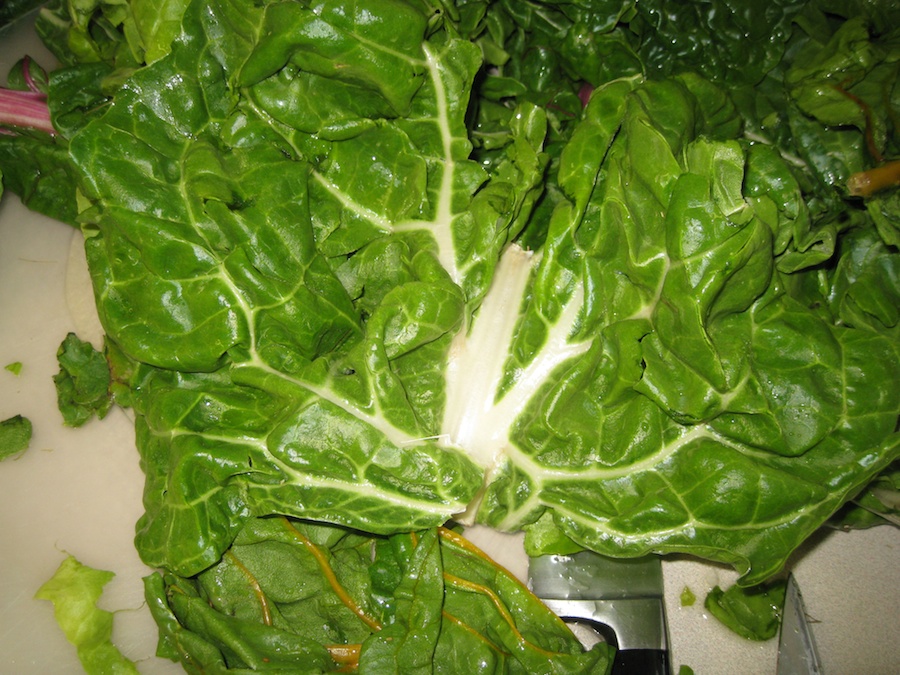
Ready for the pot
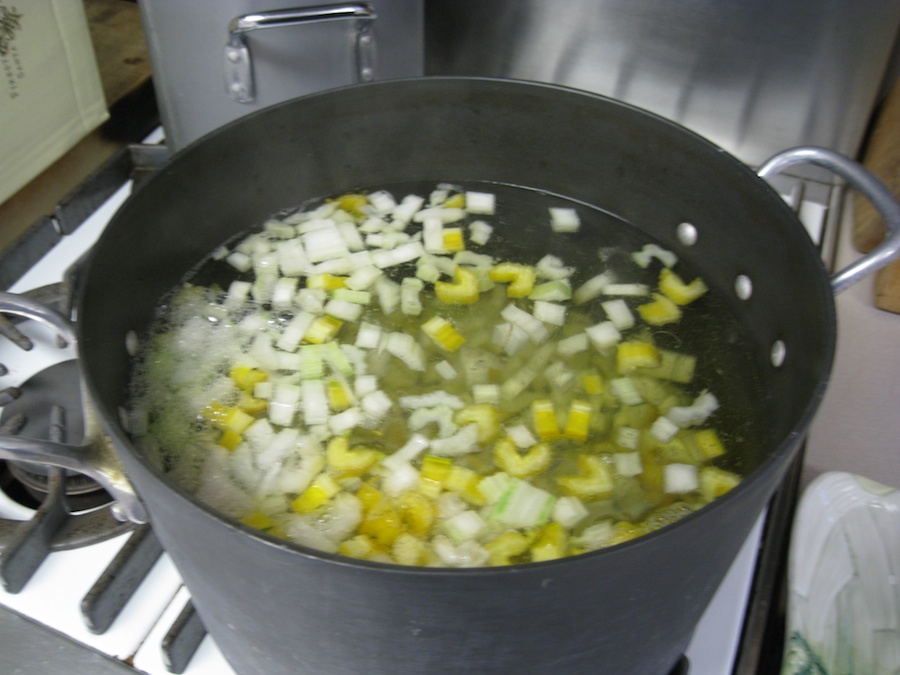
When the water comes to a boil, add the stems first... They take longer to cook... About two minutes
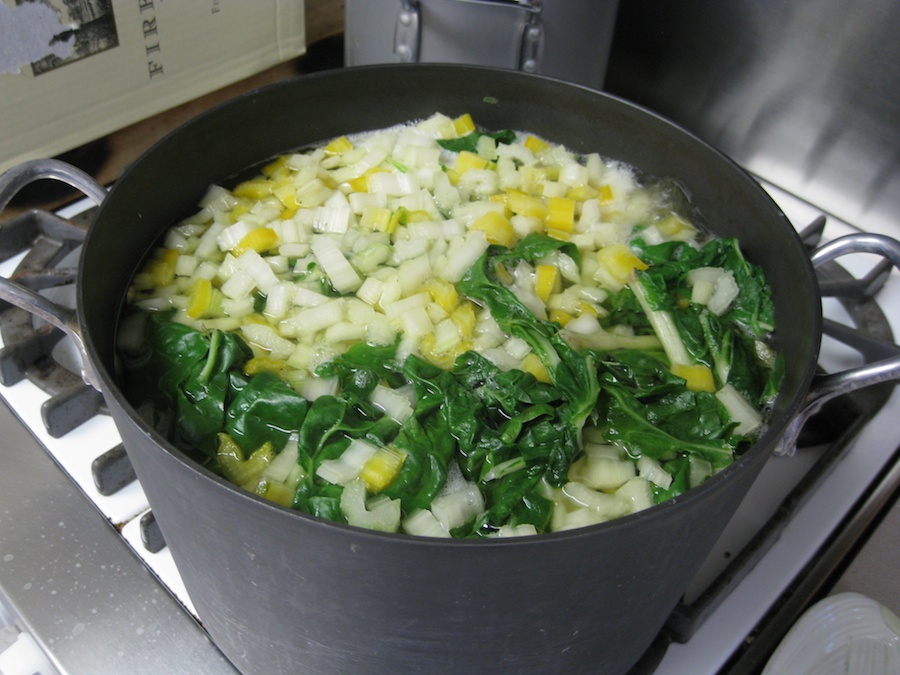
Now add the leaves.... About 2-3 minutes of boiling will be fine

.
Carefully dump the pot into a calendar
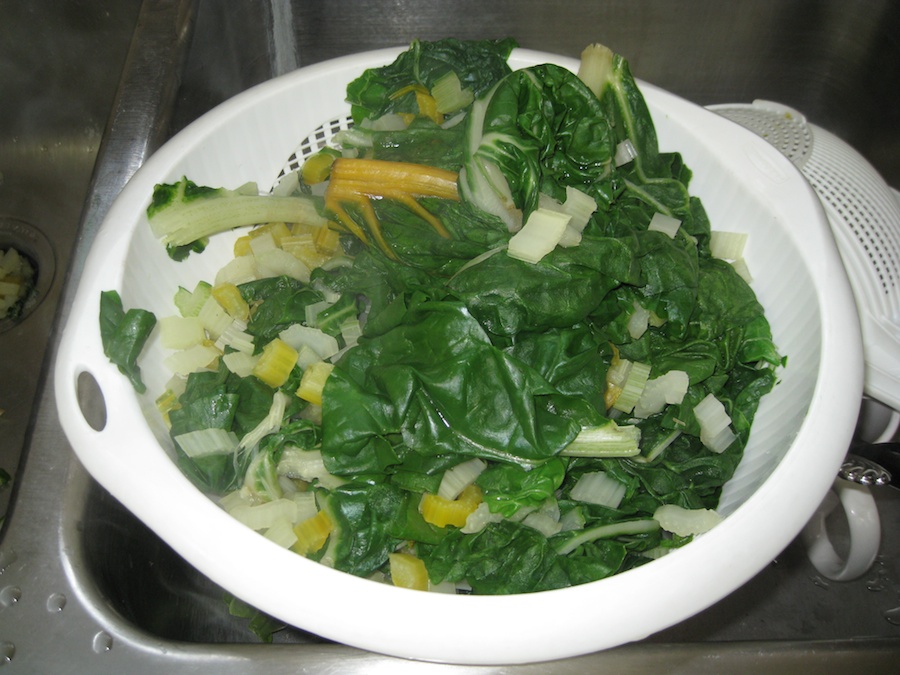
Let the chard
cool off
... You can run cold water on it if you are in a hurry
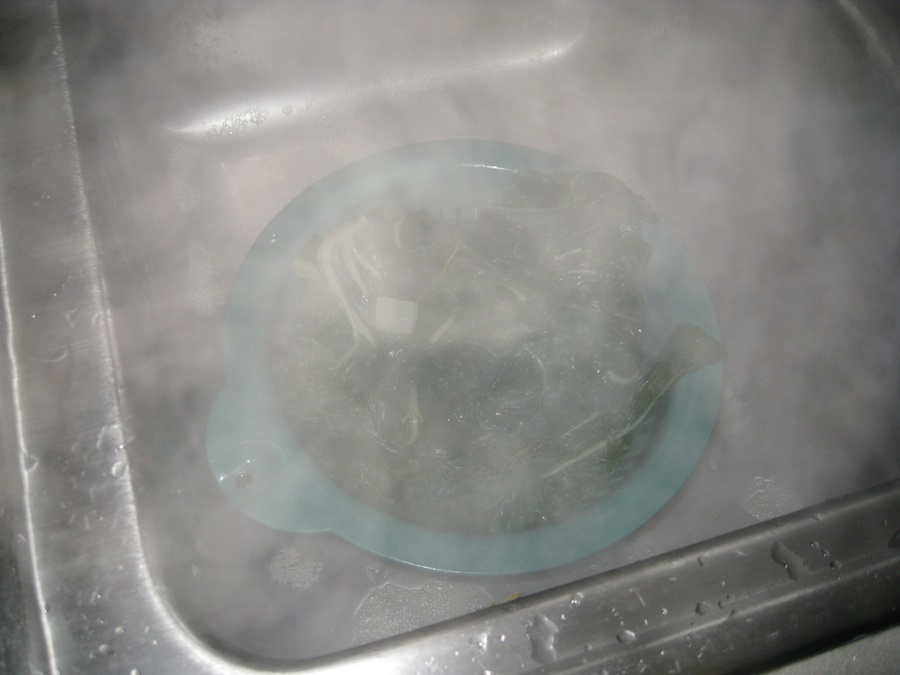
The steam is pretty intense so BE CAREFUL

Now... We dice and slice everything

We put it into containers that we will be using during the week
Now You Have The Raw Materials... It's Magic Time
- Toss penne pasta with olive oil, lemon juice, garlic, and cooked Swiss chard.
- Add zest to omelets and frittatas by adding some boiled Swiss chard.
- Use chard in place of or in addition to spinach when preparing vegetarian lasagna.